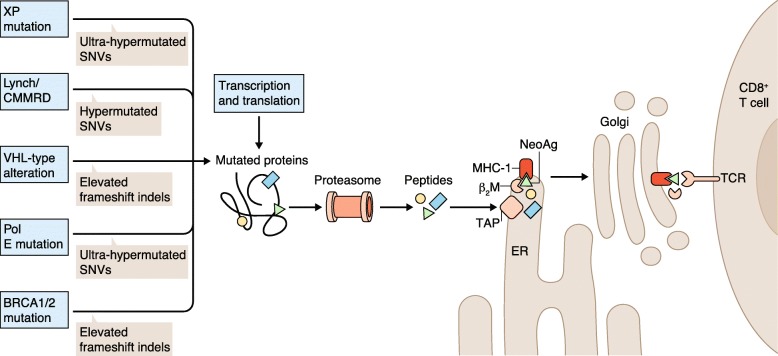Fig. 1.
Mechanism of neoantigen presentation to T cells by MHC class 1. Genetic determinants of genome instability provide different types of alterations that sometimes change protein sequences. When these tumor-unique proteins undergo proteolysis in the proteasome, the resulting peptides are imported into the endoplasmic reticulum (ER) by the TAP (Transporter associated with antigen processing) protein. In this example, one neoantigen peptide (NeoAg; green triangle) is tightly bound by a complex comprising the MHC-1 protein and beta-2-microglobulin (β2M), and is exported to the cell surface through the Golgi apparatus. The MHC-bound neoantigen is presented on the cell surface, where it can interact with and stimulate a CD8+ T cell that expresses a corresponding T-cell receptor (TCR)

